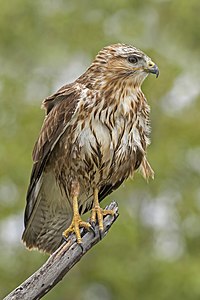
Assessment of the exposure to heavy metals and arsenic in captive and free-living black kites (Milvus migrans) nesting in Portugal.
Sign Up to like & getrecommendations! Published in 2018 at "Ecotoxicology and environmental safety"
DOI: 10.1016/j.ecoenv.2018.05.040
Abstract: Due to their high trophic level, raptor species may serve as important indicators of environmental contamination by heavy metals. This study was conducted to determine if the habitat of the black kite (Milvus migrans) is… read more here.
Keywords: milvus migrans; heavy metals; living birds; free living ... See more keywords

Haemoparasites in captive birds at Uberlândia zoo, state of Minas Gerais, Brazil
Sign Up to like & getrecommendations! Published in 2021 at "Bioscience Journal"
DOI: 10.14393/bj-v37n0a2021-47818
Abstract: Haemoparasites are one of the most important groups of bird parasites, with emphasis on the genera Haemoproteus, Plasmodium, Leucocytozoon and Trypanosoma. Zoos sustain different wild animals and are valuable tools for the education and conservation… read more here.
Keywords: minas gerais; uberl ndia; haemoparasites captive; state minas ... See more keywords

Free-ranging avifauna as a source of generalist parasites for captive birds in zoological settings: An overview of parasite records and potential for cross-transmission
Sign Up to like & getrecommendations! Published in 2020 at "Journal of Advanced Veterinary and Animal Research"
DOI: 10.5455/javar.2020.g445
Abstract: Captive birds in zoological settings often harbor parasites, but little information is available about the potential for free-ranging avifauna to act as a source of infection. This review summarizes the gastrointestinal parasites found in zoo… read more here.
Keywords: ranging avifauna; transmission; free ranging; zoological settings ... See more keywords